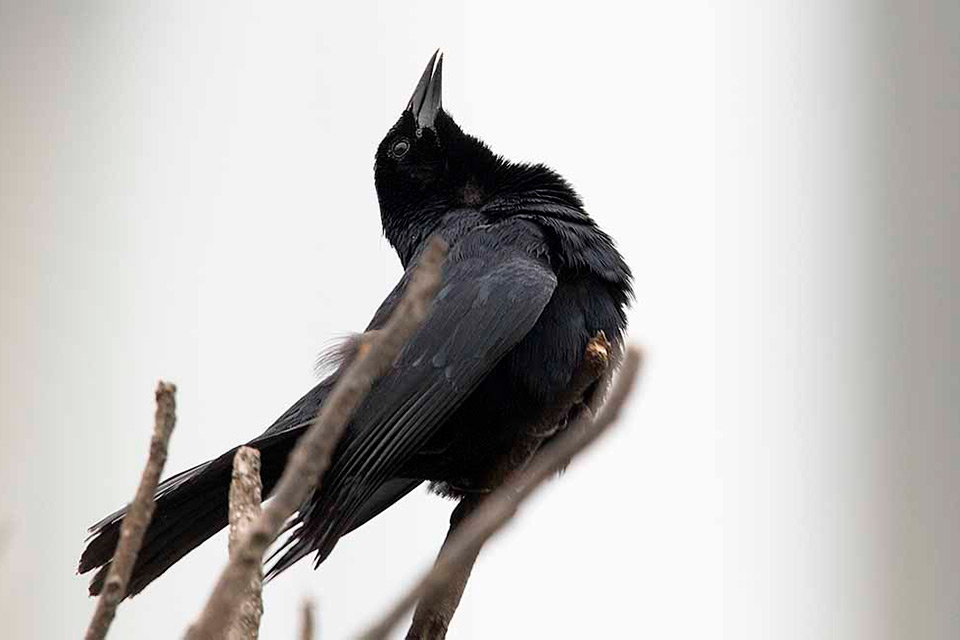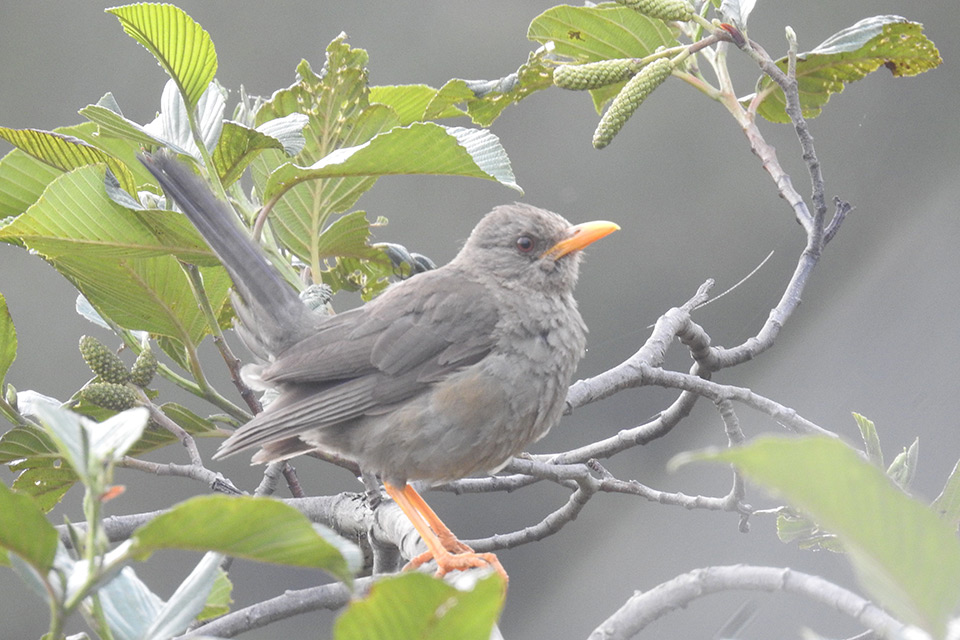- This Earth Day, let’s forget for a moment the concerns of the pandemic and politics, and pay attention to that natural soundscapes of cities … and the little birds of the Zoom calls, says Enrique Ortiz, Senior Program Director at the Andes Amazon Fund.
- The Spanish version of this piece originally appeared in RPP.
- This post is a commentary. The views expressed are those of the author, not necessarily Mongabay.
The fondness for bird watching is so much a part of the life of “the birders” that it is even unconscious. Without realizing it, I am listening and watching our feathered fellow citizens, wherever I am, even in front of my computer. And now, in these days when I spend more time in Zoom calls than outside, I frequently interrupt conversations, asking about the birds that are heard in the background, or asking for silence to listen to them. “Did you hear it?” It seems that sometimes I pay more attention to the birds than the conversations themselves, as frequently people ask me “who are you listening to?”. I can even predict in which city or neighborhood the participants of the zoom calls are located based on the birds calling.
Lima
It is curious that when the calls are from some neighborhoods in Lima, Peru, the loudest and most dominant bird call is that of the Scrub blackbird, a glossy black, medium-sized bird, which is noted for its sharp and musical call. They are quite common in gardens, particularly in Lima’s districts of Miraflores and San Isidro. At the end of the day, as if they were having a “happy hour”, they often gather in large groups on a single tree, perhaps telling each other how the day went.

Depending on the time, the West Peruvian dove (called cuculí in Peru) can also be heard. Those native pigeons should be, along with the black vulture, in the coat of arms of the city of Lima. There is no other capital on the continent where this bird could be its best representative. They dominate the early hours of the morning with a sweet melody that seems to repeat their vernacular name, cuucuulíí. Their bright blue eyelids look like they’ve been painted, ready for a party.

The Andean highlands
When the calls are with colleagues in the Andean region, the song that dominates in the background is that of the rufous collared sparrow, or as it is known locally, the pichisanka. This little bird has such a nice face and a crest that makes you smile, as if seeing a friend. It is always prowling the open spaces of cities, whether in parks or gardens, where it is very active looking for seeds, and the males, like good Andean romantics, spend their time singing all day long, probably to keep their partners attentive. Its melody is as characteristic of the sierra as is the “fried guinea pig”.

The “Eared Dove” is another bird that dominates the Andean soundscape in Peru. It can be heard in the early morning (that is why it is locally called “the dawn dove”) or close to sunset. It has a song that, to some, sounds somewhat sad and even melancholic. For me, it is rather melodic, sweet, and profound. It has that depth that reaches your soul.

The pichisanka, the dawn dove and another bird called Chiguanco or the chiguanco thrush dominate the acoustic environment of cities at higher elevation like Cusco and Huancayo.

The Amazon
But when the calls are from the Amazon region, the varieties of songs are as great as its biodiversity. In general, the dominant bird call there is so high that it almost pierces your eardrums. It is like a violin note, which is why the locals call its author, the “violinist”. This, the blue-gray tanager, a medium-sized, opaque light blue bird that is as typical for the Amazon as are the mosquito bites. It is active everywhere and at all times, searching for fruits in the courtyards of cities. From what I know, these birds are not territorial, and their songs serve rather to maintain their relationships with their conspecifics.

Also, it is quite common to hear a bird named “Víctor Díaz” or great kiskadee. Their song literally sounds like their name they call: Victor Diaz. Bright yellow in color with a brown back, they are from the group of the flycatchers and are often seen perching on exposed branches or poles, waiting for an insect to catch it on the wing. Víctor Díaz is very popular in cities like Iquitos or Pucallpa.

Finally, there are the always common white winged parakeets or locally called pihuichos. These parakeets are as common as they are noisy, and don’t sing as well as they look. In general, the more beautiful and colorful the bird is, it usually ends up being the worst singer, and vice versa. A form of compensation, perhaps. Any resemblance to humans is no coincidence.

Zooming out
Now that we are returning to the usual noise pollution levels, let’s zoom out and turn our eyes and ears to that urban world that few see. I wish there was an “hour on the planet” -at daytime and every day, where silence reigns so that we can appreciate that natural music that every healthy city should have. Meanwhile, for the birders, the only choice we have is to get up early.
Originally published in Spanish at Las avecitas del zoom.
"bird" - Google News
April 22, 2021 at 09:32AM
https://ift.tt/32z43tS
The birds of Zoom (commentary) - Mongabay.com
"bird" - Google News
https://ift.tt/2s1zYEq
https://ift.tt/3dbExxU
Bagikan Berita Ini















0 Response to "The birds of Zoom (commentary) - Mongabay.com"
Post a Comment